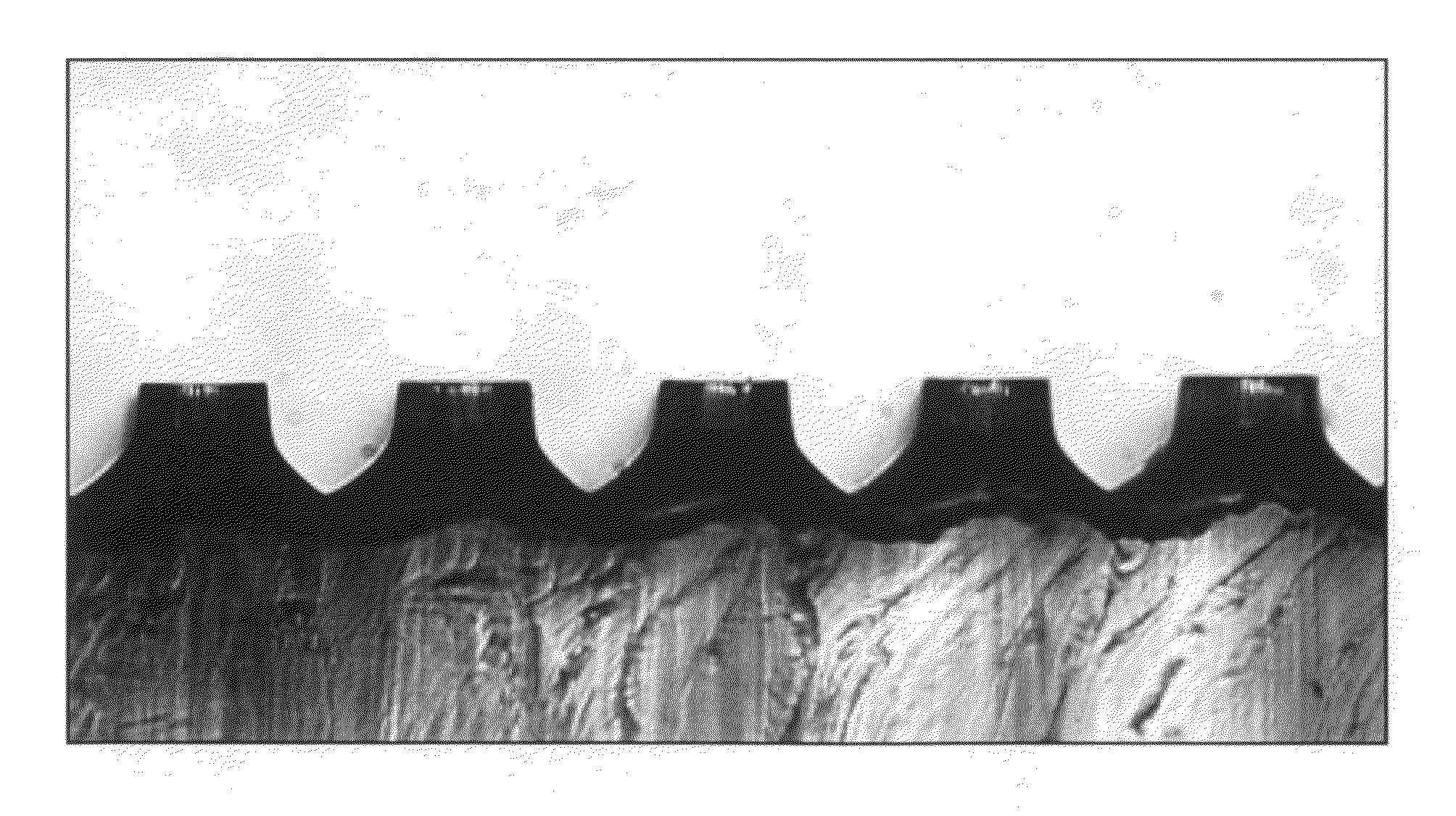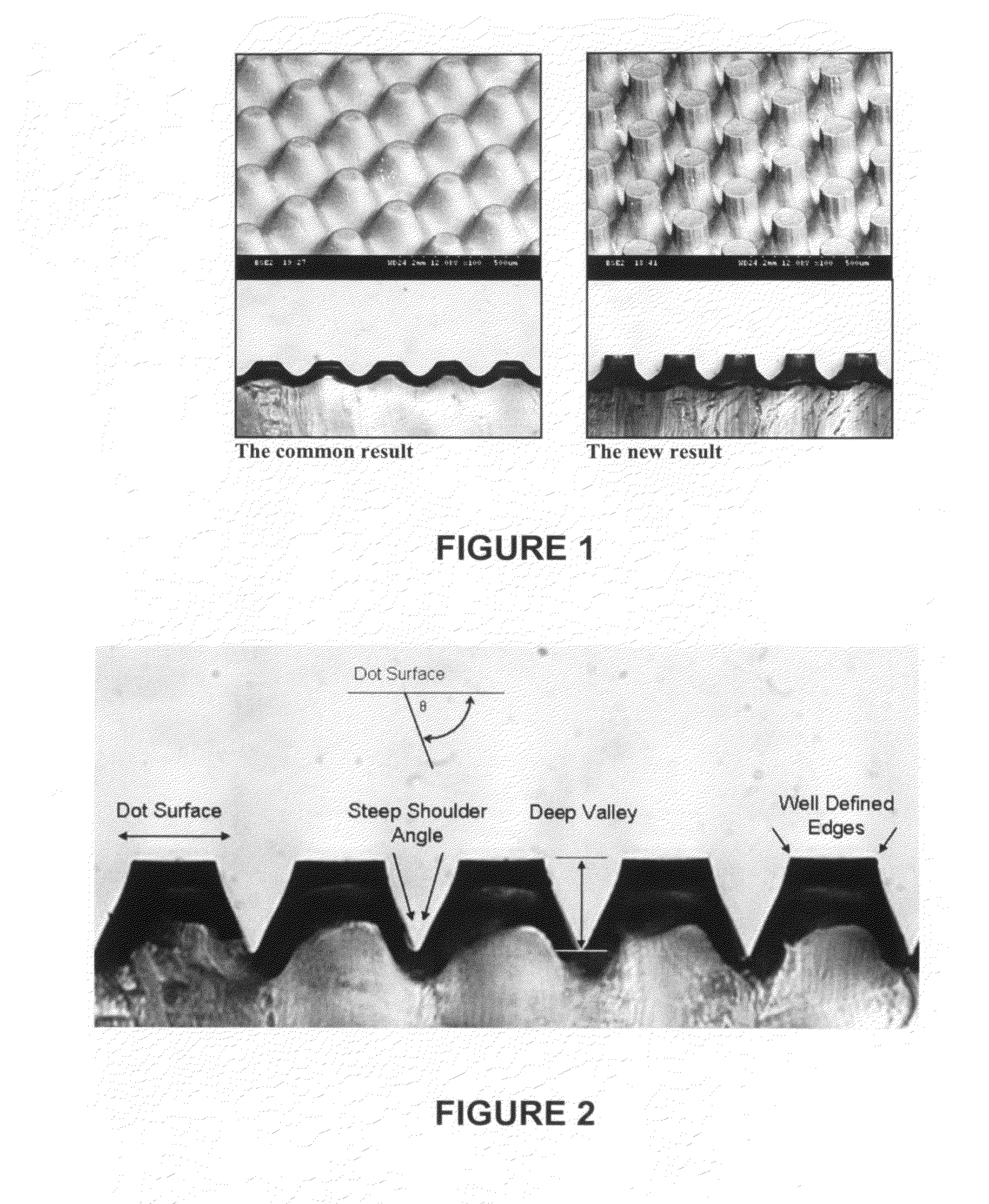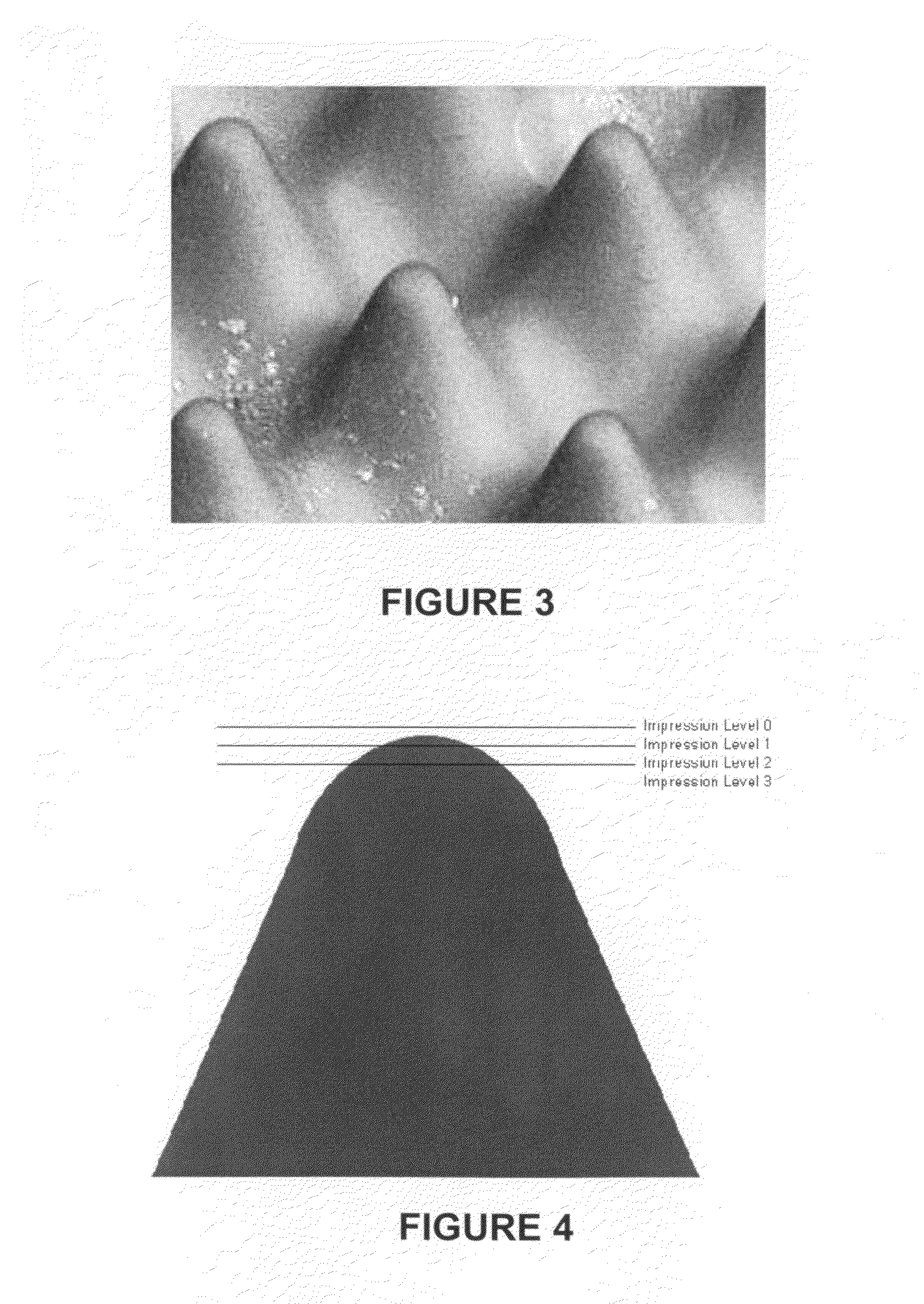Method of improving print performance in flexographic printing plates
a technology print performance, which is applied in the field of improving the print performance of flexographic printing plate, can solve the problems of affecting the printing effect, affecting the quality of the relief image, and affecting the effect of the printing effect, so as to achieve good results
- Summary
- Abstract
- Description
- Claims
- Application Information
AI Technical Summary
Benefits of technology
Problems solved by technology
Method used
Image
Examples
Embodiment Construction
[0066]The inventors of the present invention have found that the shape and structure of a printing dot has a profound impact on the way it prints. Knowing this, one can manipulate the resultant shape of the printing dots to optimize printing by utilizing the printing methods described herein. FIG. 1 depicts a printing element with a plurality of dots demonstrating the unique dot / shoulder structure of the invention as compared to the dots of a printing element exposed without the benefit of this invention.
[0067]More particularly, the inventors of the present invention have found that a particular set of geometric characteristics define a flexo dot shape that yields superior printing performance, as shown in FIG. 2. The geometric parameters that characterize the optimum flexographic printing dot, especially in digital flexo printing, include:
[0068](1) planarity of the dot surface;
[0069](2) shoulder angle of the dot;
[0070](3) depth of relief between the dots; and
[0071](4) sharpness of ...
PUM
| Property | Measurement | Unit |
|---|---|---|
| shoulder angle | aaaaa | aaaaa |
| shoulder angle | aaaaa | aaaaa |
| shoulder angle | aaaaa | aaaaa |
Abstract
Description
Claims
Application Information
 Login to View More
Login to View More - R&D
- Intellectual Property
- Life Sciences
- Materials
- Tech Scout
- Unparalleled Data Quality
- Higher Quality Content
- 60% Fewer Hallucinations
Browse by: Latest US Patents, China's latest patents, Technical Efficacy Thesaurus, Application Domain, Technology Topic, Popular Technical Reports.
© 2025 PatSnap. All rights reserved.Legal|Privacy policy|Modern Slavery Act Transparency Statement|Sitemap|About US| Contact US: help@patsnap.com



